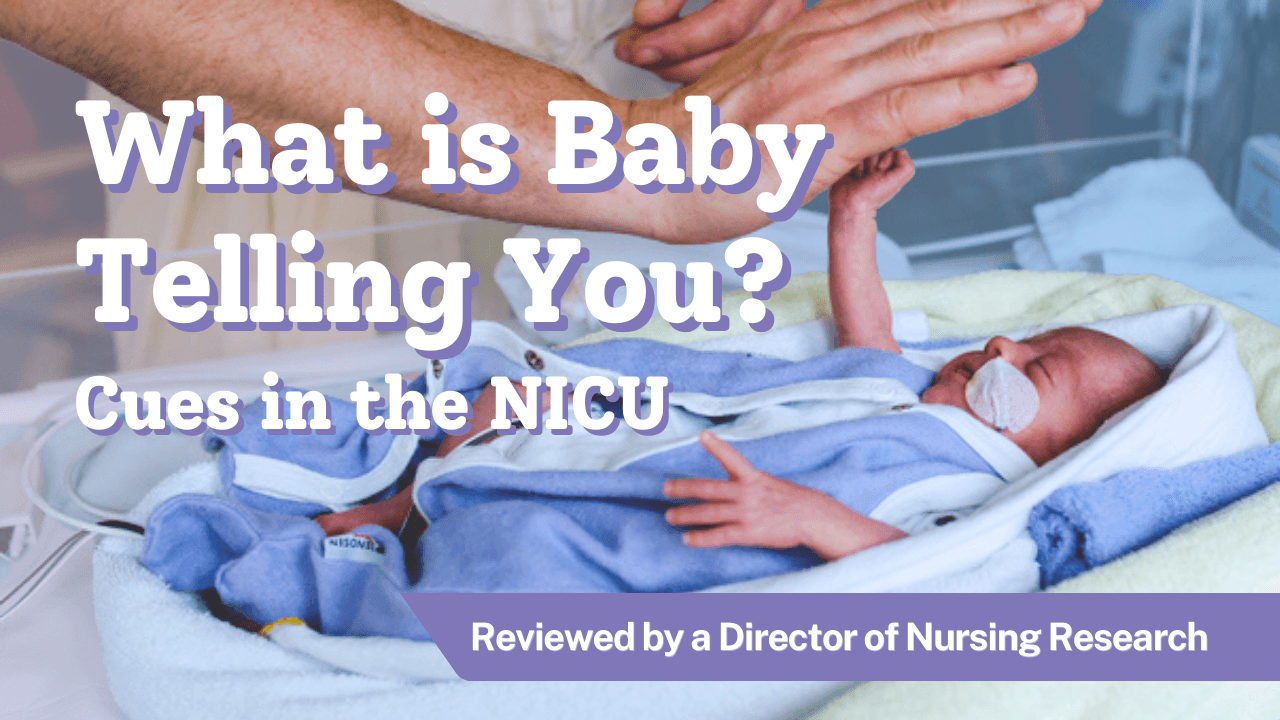What is My Baby Telling Me? Understanding Common Baby Cues in the NICU

A lot goes into having a new baby and it takes time to learn what they’re trying to tell you. Each baby is different. Learning your preemies’ cues is a great way to start bonding with them in the NICU and will prepare you for when you bring them home. Here are some common states of newborn alertness, signs of hunger, and cues to help you understand baby better.
Throughout the day, newborn babies move through various states of waking and alertness. Understanding the signs when baby is in each state is helpful in determining when to play or begin Massage+ 30, 10, 5.
1. The Drowsy State – this occurs when baby is waking up from sleep. You can tell baby is in this state if it looks like they could go back to sleep.
2. Quiet Alert – baby is quiet and calm, with eyes wide open. They’re ready to play in this state, but there is little to no facial movement or activity.
3. Active Alert – baby’s eyes are open and they’re moving around a lot. They may get fussy, which could mean they’re tired or hungry.
What is Massage+ 30, 10, 5? This is a simple and powerful baby massage for premature babies based on 40+ years of research. It’s a massage of the baby’s head, arms, legs, belly, and back that incorporates communication and movement. This is proven to help with baby’s sleeping and eating habits, as well as their sense of hearing, touch, sight, and motion.
How do you know if baby is ready to eat? A few baby hunger cues to watch out for include mouthing, sticking out tongue, hand to mouth, sucking on hand, rooting, crying, and increased movement.
Understanding baby’s state of alertness and hunger cues are important. There are also many other cues to let you know if they’re happy and engaged, or if they need a slight break. We categorize these cues by Go cues, Slow cues, and Stop cues.
Go cues let you know that baby is engaged and to continue with the interaction or massage. Some of these engagement cues include wide eyes, a happy face, and open hands.
Slow cues let you know that baby is disengaged and needs a little break from the interaction. These may include frowning, yawning, eyes tightly shut, or refusing eye contact. When you notice these cues, you don’t need to stop playing, but slow down what you’re doing.
Stop cues tell you baby is disengaged and needs all stimulation to stop. These disengagement cues may include crying, whining, or fussing.





